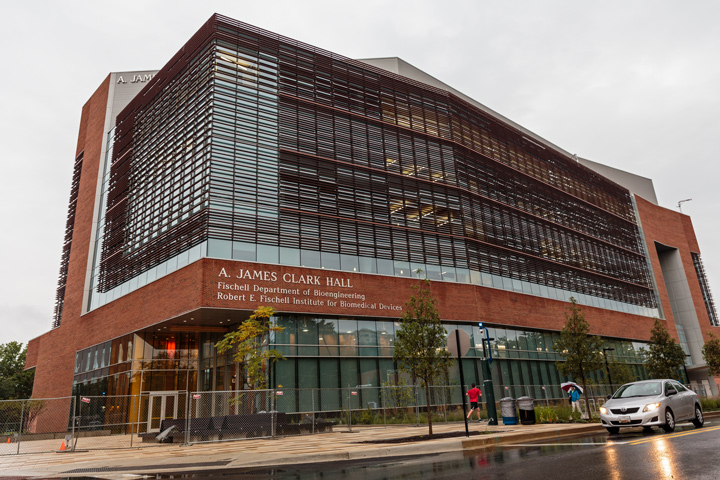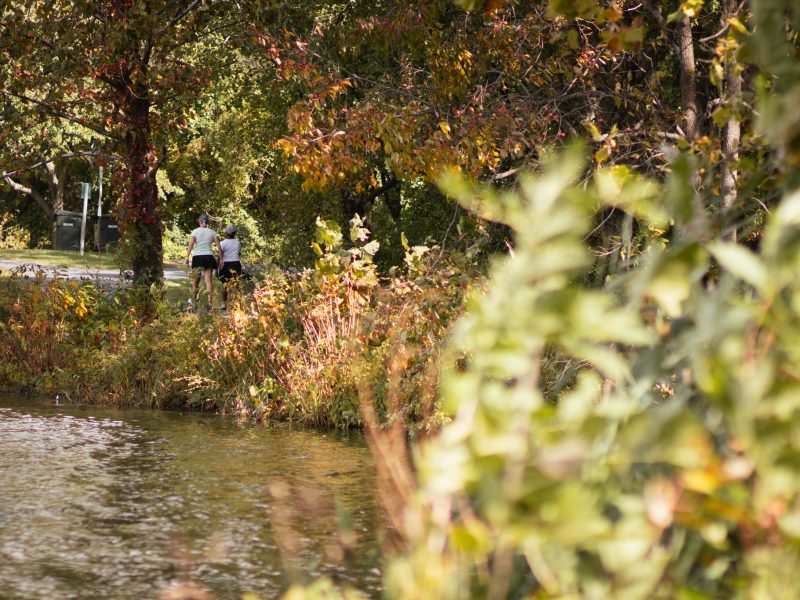Researchers at the University of Maryland will look for strategies to improve the recovery of infrastructure after natural disasters, with the help of a grant from the National Science Foundation.
The $750,000 grant will fund a three-year project, which began on Sept. 1. The project is led by Allison Reilly, a professor in the civil and environmental engineering department at this university. Mike Gerst and Melissa Kenney, both research professors at the university’s Earth System Science Interdisciplinary Center, join Reilly on the project.
“When disasters happen, often times they knock out several different things at once that we rely on on an everyday basis,” Gerst said. “Because those are often owned by different entities and they are also operated in very different ways, they don’t often communicate with one another.”
[Read more: UMD will launch a $3 million center for grad students to study sustainability]
The project will use the university’s campus as its lab by testing its overall infrastructure, Kenney said.
The researchers will conduct interviews with various operators — a person who runs an infrastructure system, which would include engineers and electricians, among others — on campus, Reilly said. They will also run “failure” simulations, a hypothetical situation demonstrating what would happen if an infrastructure system fails, such as when the campus loses power in a hurricane.
From there, researchers will analyze the information. Rather than rebuilding infrastructure completely, the project hopes to provide inexpensive changes to the systems, such as checklists, information sharing strategies or alternative disaster protocols, Reilly added.
The researchers will work closely with the university’s Facilities Management and the Division of Information Technology departments. Once the project “picks up speed,” both undergraduate and graduate students will also be brought on for research assistance, Kenney said.
[Read more: With a $7.7 million grant, UMD researchers are leading a study on ticks]
Kenney said they’re looking at the “interdependence” of the university’s systems — how systems rely on one another to function, such as the water and power systems — and find ways to improve their coordination.
“All of these systems are really connected with the other functionalities of other systems,” Reilly said. “We’re hoping that we can find low-cost interventions that really encourage faster recovery.”
The project comes at a time when deadly natural disasters are hitting harder and more frequently. Last year, Hurricane Maria devastated Puerto Rico, becoming the worst storm to hit the island since 1928, with estimates between $40 billion and $85 billion in insured losses. Recently, Hurricane Florence hit a number of southeastern states in the U.S with pouring rain and powerful winds.
According to the Center for Climate and Energy Solutions, over the past two to three decades, the number of Category 4 and 5 hurricanes in the Atlantic basin has increased by 45 to 87 percent.
The American Society of Civil Engineering gave U.S. infrastructure received a “D+ grade in 201. The grade focuses on the condition, operation and resilience, among other factors. The “D” lettering means U.S. infrastructure is deteriorating and is at “strong risk of failure,”according to the report.
The two major issues regarding infrastructure after a recovery are the robustness and resilience of the infrastructure — how the infrastructure is maintained and its recovery time, said Gregory Baecher, a civil and environmental engineering professor at this university and an affiliate in the Center for Disaster Resilience.
“From a societal perspective, anything we can do to get infrastructure back online faster after disasters or various failures, I think is really critical,” Kenney said. “I hope that the research we gain will help campus improve their infrastructure and we can apply it to other communities.”



